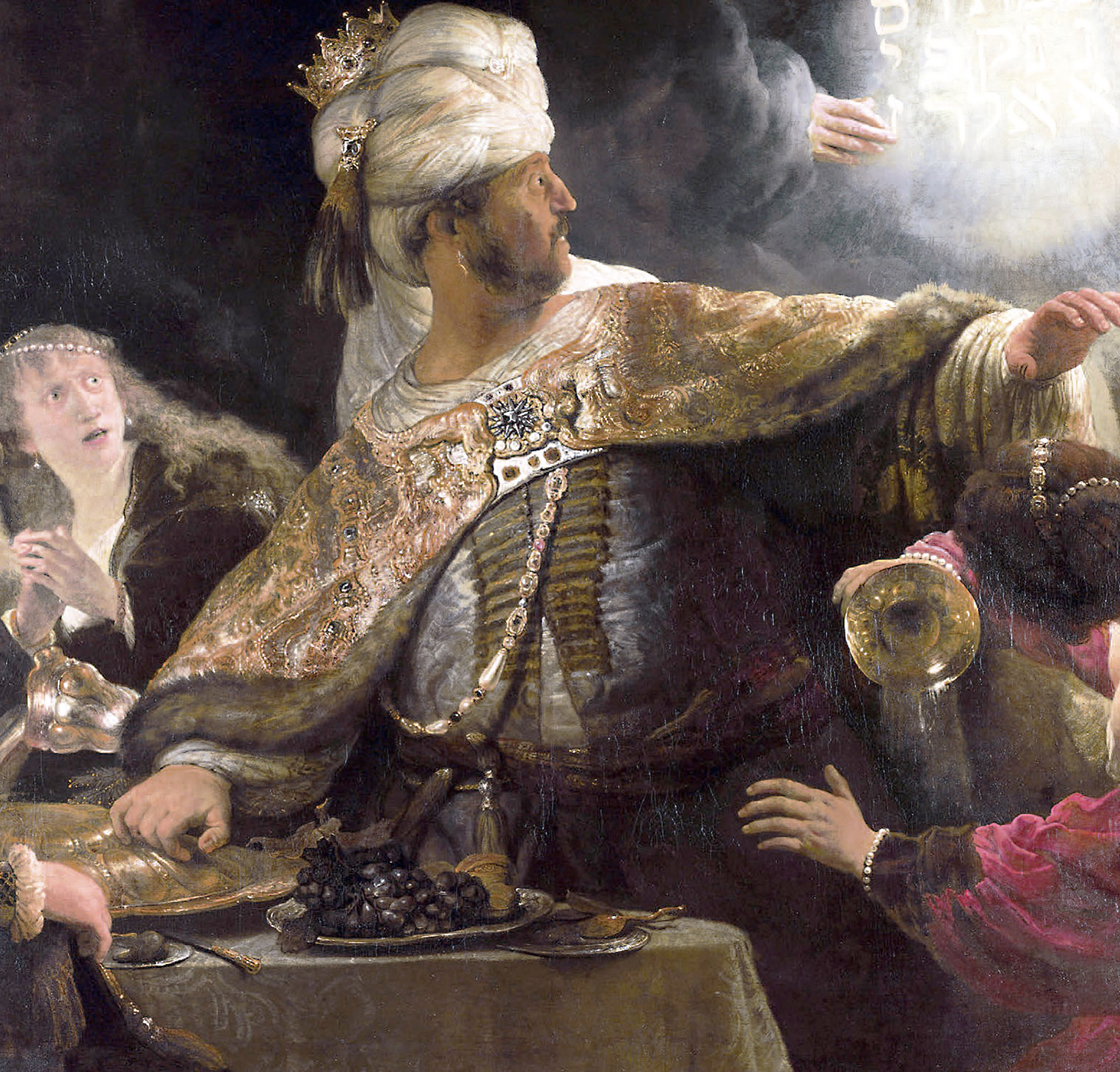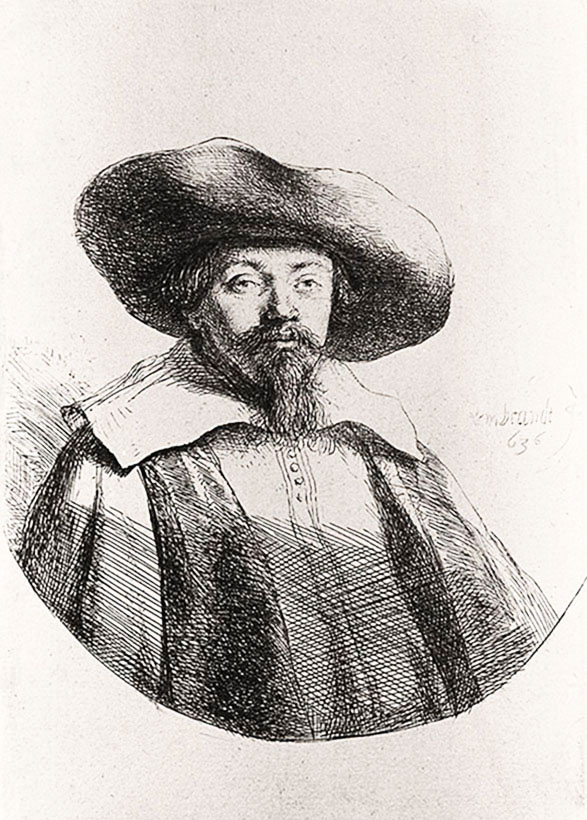
Bible, History, Archaeology
Bible,
History,
Archaeology
Writing by an unknown hand
Contents:
Presentation – Menasseh ben Israël
Here is the handwriting that has been traced:
Mené, mené, téqel and parsîn.
Here is the explanation of these words, engraved on the wall by an invisible hand, by the prophet Daniel to King Belchatsar:
– Driven, driven God has counted your reign and put an end to it.
– Teqel : tou have been weighed in the balance and found to be light.
– Parsîn : your royauwill be divided and given to the Medes and Persians (Daniel 5, 25-28).
Some biblical scholars still wonder why the Babylonian sages, summoned by King Belchazzar, proved unable to read the inscription traced by this hand on the wall of the feasting hall.
Rembrandt Harmenszoon van Rijn, Belchatsar's Feast (detail), circa 1636-1638, oil on canvas. National Gallery, London.
Rembrandt's friend, the Jewish scholar Menasseh ben Israel (whose portrait he had drawn (opposite) and illustrated one of his books), developed a theory. According to him, the letters had been written vertically from top to bottom and from right to left., Aramaic (a language closely related to Hebrew) is read horizontally from right to left.


